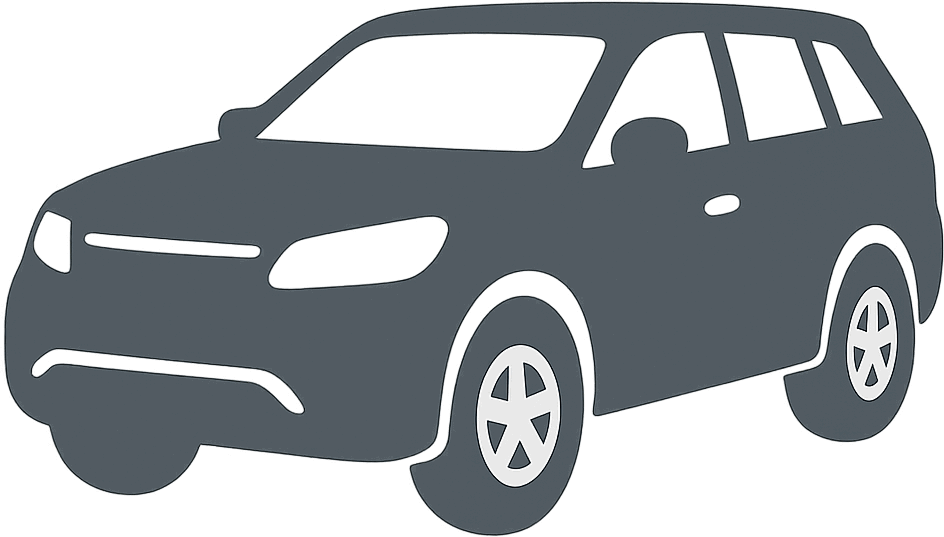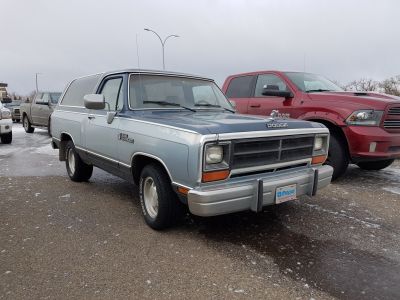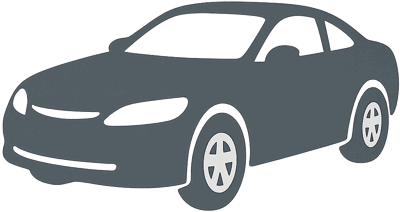 1977 Jeep Cherokee I (SJ) 5-door Dimensions, Size & Specs
1977 Jeep Cherokee I (SJ) 5-door Dimensions, Size & Specs
Measurements of the 1977 Jeep Cherokee I 5-door, engineered for optimal performance and comfort
| Dimensions | |
|---|---|
| Length: | 4620-4660 mm181.9-183.5 in15.2-15.3 ft |
| Width: | 1920-1940 mm75.6-76.4 in6.3-6.4 ft |
| Height: | 1660-1700 mm65.4-66.9 in5.4-5.6 ft |
| Trunk Capacity (Max): | 2693 liter95.1 cu ft |
| Weight Specifications | |
| Curb Weight: | 1980 kg4365 lbs |
| Maximal permitted Weight: | 2400 kg5291 lbs |
| Roof Load: | 150 kg331 lbs |
| Tire Specifications | |
| Rims Size: | 15-inch rims:
|
| Tire Size: |
|
The Jeep Cherokee I (SJ) 5-door, produced from 1977 to 1983, is a rugged and spacious SUV that marked an important evolution in the Jeep lineup. Measuring between 4620 mm and 4660 mm (approximately 182 to 183.5 inches) in length, 1920 mm to 1940 mm (75.6 to 76.4 inches) in width, and standing 1660 mm to 1700 mm (65.4 to 66.9 inches) tall, this model offers robust road presence combined with generous interior space. Its curb weight of about 1980 kg (4,366 lbs) supports a maximum gross weight of 2400 kg (5,291 lbs), ensuring durability and a strong load-carrying capability. The large rear cargo space expands impressively to 2693 liters (95 cubic feet) with the rear seats folded, catering well to both gear-heavy adventures and family trips. Its rim size of 7J x 15 combined with tire dimensions of 225/75 R15 contribute to solid off-road performance and road grip, typical of Jeep’s dependable design ethos during this era. The roof can support up to 150 kg (330 lbs), providing additional utility for roof racks or cargo carriers. This Cherokee generation is celebrated for blending classic SUV toughness with practical dimensions ideal for a variety of terrains and everyday use, making it a favored choice for off-road enthusiasts and collectors alike.
Discover the standout features that make the 1977 Jeep Cherokee I 5-door a leader in its class
Have a question? Please check our knowledgebase first.
The Jeep Cherokee I (SJ) 5-door from 1977 to 1983 features exterior dimensions with a length ranging between 4620 mm and 4660 mm (approximately 182.3 to 183.5 inches), a width from 1920 mm to 1940 mm (about 75.6 to 76.4 inches), and a height between 1660 mm and 1700 mm (approximately 65.4 to 66.9 inches). These dimensions reflect the Cherokee SJ's substantial road presence typical of SUVs of its era. Its width and height offer ample interior space, favoring passenger comfort and cargo volume, while its length ensures stability and off-road capability. When compared to other similar SUVs from the late 1970s, this size positioned the Cherokee as a versatile mid-to-large SUV suitable for both urban and off-road environments.
The Jeep Cherokee I (SJ) 5-door has a curb weight of approximately 1980 kilograms (about 4,366 pounds), which refers to the weight of the vehicle without passengers or cargo but with all necessary operating consumables such as fuel, oil, and coolant. Its maximum gross vehicle weight rating (GVWR) is rated at 2400 kilograms (around 5,291 pounds), indicating the maximum total permissible weight of the vehicle including passengers, cargo, and any added load. This weight capacity ensures that the Cherokee SJ can accommodate a considerable payload, contributing to its utility purpose as an SUV, whether for family trips, hauling gear, or light towing tasks.
When the rear seats of the Jeep Cherokee I (SJ) 5-door are folded down, the vehicle offers a generous luggage capacity of 2693 liters (approximately 95.1 cubic feet). This sizeable cargo space is one of the Cherokee SJ’s highlights, enabling drivers to carry bulky items, camping gear, or luggage with considerable ease. Compared to other SUVs from the late 1970s and early 1980s, the Cherokee’s cargo volume is quite competitive, often surpassing many contemporaries in the SUV category. This versatility makes the Cherokee particularly appealing for outdoor enthusiasts and families requiring flexible transport solutions.
The Jeep Cherokee I (SJ) 5-door's dimensions—length between 4620 mm to 4660 mm (182.3 to 183.5 inches), width from 1920 mm to 1940 mm (75.6 to 76.4 inches), and height 1660 mm to 1700 mm (65.4 to 66.9 inches)—make it relatively large for an SUV of its time. Most standard residential garages have an interior width of around 2400 mm (94.5 inches) and a length of approximately 6000 mm (236 inches), so the Cherokee fits comfortably in length and width. Height clearance is usually around 2100–2400 mm (83–94 inches) inside a standard garage, so the Cherokee’s height presents no issue. Therefore, the Cherokee I (SJ) can fit into a standard garage without problems, although drivers should account for mirrors and slight clearance on sides during parking.
The Jeep Cherokee I (SJ) 5-door, produced from 1977 to 1983, was actually the first generation of the Cherokee model line, so it has no direct predecessor under the Cherokee name. However, compared to earlier Jeep Wagoneer models and other Jeep SUVs available at the time, the Cherokee SJ offered a somewhat more compact and sportier option. While the Wagoneer was larger and more station wagon-like, the Cherokee has a slightly shorter length (roughly 4620-4660 mm vs. Wagoneer's approximately 5030 mm), making it more maneuverable. The width and height are fairly similar, but the Cherokee's design prioritized a mix of comfortable on-road driving and capable off-road performance, contributing to its appeal and setting a new standard that helped define later Jeep SUV designs.
Dimensionally, the Jeep Cherokee I (SJ) 5-door holds its own among peers in the late 1970s and early 1980s SUV market segment. With its length around 4620-4660 mm (182.3 - 183.5 in), width near 1920-1940 mm (75.6 - 76.4 in), and height between 1660-1700 mm (65.4 - 66.9 in), it is somewhat smaller than full-size SUVs like the Chevrolet K5 Blazer or Ford Bronco of the time but larger than some compact SUVs. This size balance offered a good combination of interior space and maneuverability, while its robust construction and 4x4 capability gave it an edge in off-roading compared to domestic counterparts. Overall, it catered well to buyers wanting a vehicle both practical for family or utility use and rugged enough for trail adventures.
The Jeep Cherokee I (SJ) 5-door comes equipped with rims sized 7J x 15, paired with tires sized 225/75 R15. These dimensions reflect a fairly tall but relatively narrow tire profile by modern standards, optimized for the SUV’s dual on-road and off-road duties. The 15-inch rims provide a balance between durability suitable for rough terrain and comfort on paved roads. The 225 mm wide tires with a 75% aspect ratio (sidewall height to width) contribute to shock absorption and traction, particularly important given the Cherokee’s off-road heritage. This setup also plays a role in maintaining good ground clearance and sidewall flex, vital for traversing challenging off-road conditions while maintaining safety and stability.
The Jeep Cherokee I (SJ) 5-door has a roof load capacity of up to 150 kilograms (about 331 pounds). This figure represents the maximum distributed weight that can safely be placed on the roof rack without compromising vehicle stability or structural integrity. For users, this capacity is significant because it allows the transportation of bulky or additional gear such as luggage, roof boxes, camping equipment, or sports gear (like bicycles or kayaks). It's essential to stay within this limit to maintain safe handling characteristics and avoid damage to the roof structure.
Thanks to its height ranging from 1660 mm to 1700 mm (65.4 to 66.9 inches), the Jeep Cherokee I (SJ) 5-door offers good interior headroom and comfortable seating positions for occupants. The generous vertical space allows for upright seating posture and easy ingress and egress, which is desirable for an SUV designed for both on-road comfort and off-road utility. This height advantage also contributes to the vehicle’s spacious and airy cabin feeling, enhancing passenger comfort on extended journeys. Furthermore, the elevated seating position typical of the Cherokee improves driver visibility, which is essential for negotiating both urban traffic and rugged terrain.
The Jeep Cherokee I (SJ) 5-door stood out during its production years from 1977 to 1983 as one of the pioneering SUVs offering a blend of rugged off-road capability and more refined on-road comfort. Produced by Jeep, it combined a strong body-on-frame construction, four-wheel drive, and durable mechanical components, making it highly capable in diverse terrains. Its relatively boxy, functional design maximized interior space and provided multiple carrying configurations with foldable rear seats and substantial cargo capacity. These features made it popular not just with off-road enthusiasts but also families and outdoor adventurers, setting a precedent for future SUVs emphasizing versatility. Its success influenced many later Jeep models and competitors to include more passenger-friendly interiors without sacrificing off-road performance.
Discover similar sized cars.

| Production: | 1987-1993 |
|---|---|
| Model Year: | 1987 |
| Length: | 4690 mm184.6 in |
| Width: | 2020 mm79.5 in |
| Height: | 1770 mm69.7 in |

| Production: | 2022-2025 |
|---|---|
| Model Year: | 2023 |
| Length: | 4630 mm182.3 in |
| Width: | 1935 mm76.2 in |
| Height: | 1706 mm67.2 in |

| Production: | 2019-present |
|---|---|
| Model Year: | 2019 |
| Length: | 4605 mm181.3 in |
| Width: | 1878 mm73.9 in |
| Height: | 1643 mm64.7 in |

| Production: | 2020-present |
|---|---|
| Model Year: | 2021 |
| Length: | 4605 mm181.3 in |
| Width: | 1878 mm73.9 in |
| Height: | 1643 mm64.7 in |

| Production: | 2025-present |
|---|---|
| Model Year: | 2024 |
| Length: | 4615 mm181.7 in |
| Width: | 1901 mm74.8 in |
| Height: | 1670 mm65.7 in |

| Production: | 2022-present |
|---|---|
| Model Year: | 2022 |
| Length: | 4593 mm180.8 in |
| Width: | 2098 mm82.6 in |
| Height: | 1625 mm64.0 in |

| Production: | 2017-2022 |
|---|---|
| Model Year: | 2018 |
| Length: | 4573-4595 mm180.0-180.9 in |
| Width: | 2098 mm82.6 in |
| Height: | 1625 mm64.0 in |

| Production: | 2023-present |
|---|---|
| Model Year: | 2023 |
| Length: | 4602 mm181.2 in |
| Width: | 1900 mm74.8 in |
| Height: | 1645 mm64.8 in |
